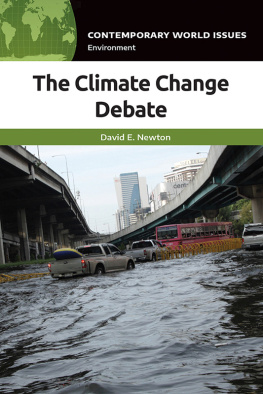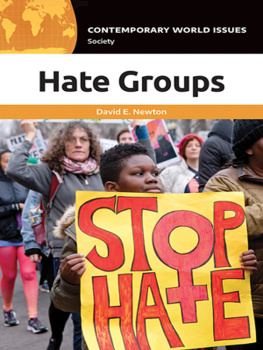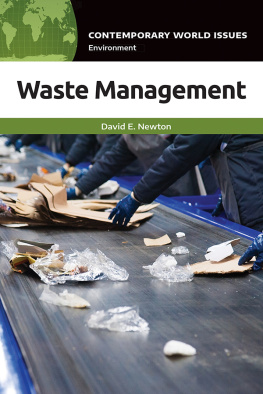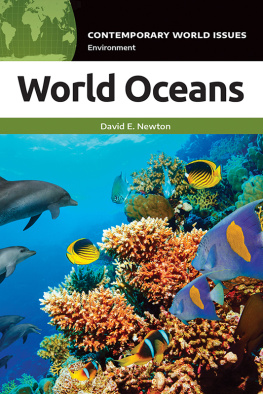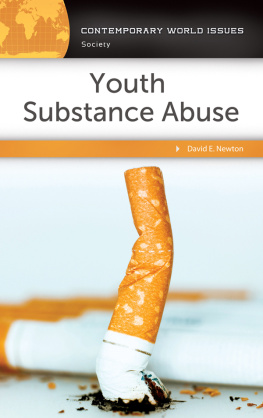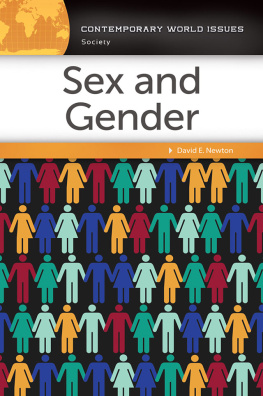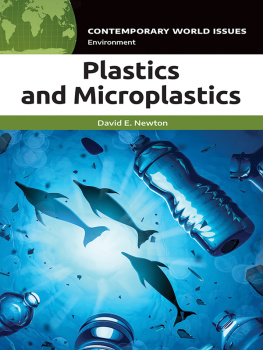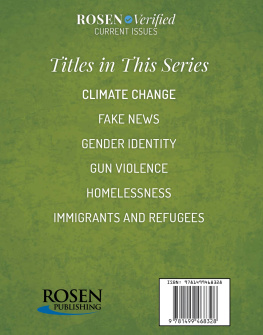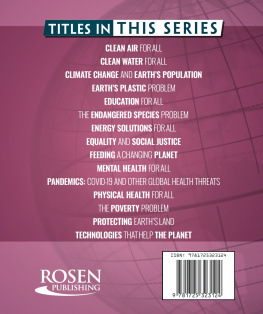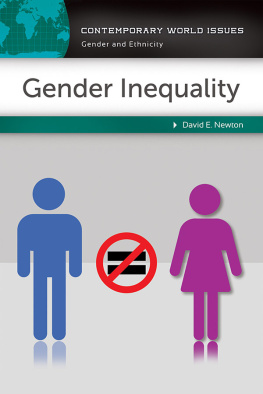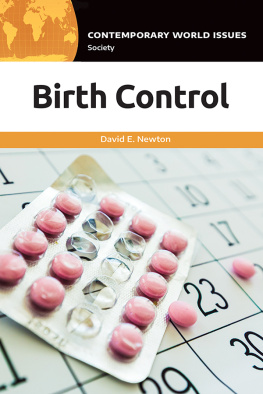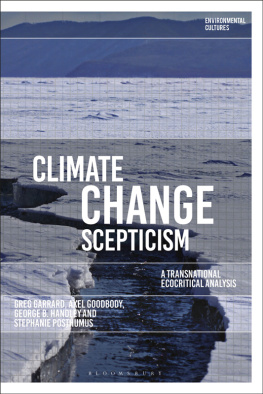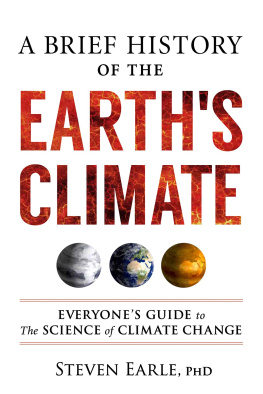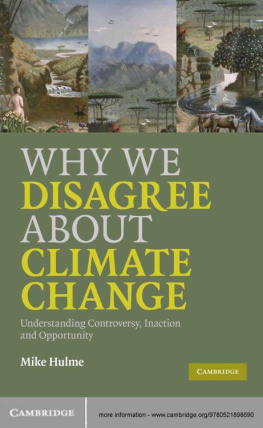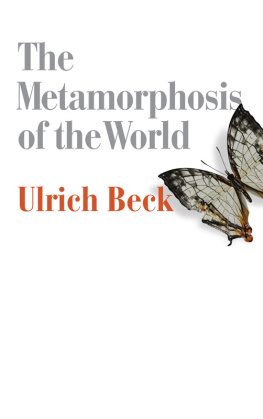
Global warming is the most pressing problem the world faces. (Benn 2007)
... we are as confident that humans cause climate change than that smoking causes cancer. (Ocko 2019)
The climate has changed before. Humans were not around. Therefore, humans do not cause climate change. (Sense Seeker 2012)
The concept of global warming was created by and for the Chinese in order to make U.S. manufacturing non-competitive. (Trump 2012)
Countless numbers of comments such as these can be found in the print, electronic media, and social media today and the recent past. Is the climate really changing? If so, do humans play any part in the changes that are taking place? What are some of the issues that a changing climate might create for Americans and the rest of the world? What solutions may be available for dealing with those issues? The subject of climate change involves so many questions that it is worth writing a book about! So, here it goes.
The first question one might ask in this climate change debate is what we know about the topic from Earths history. Is the changing climate observed today a new phenomenon? Or is it an integral part of Earths history? If the latter, how do scientists explain the changes that have taken place in climate? How do they collect information about climatic patterns a hundred years ago; a thousand years ago; a million years ago (if at all)?
The topic of climate change is intimately related to the subject of global warming. Although climate is the product of many factors, Earths annual average temperature is certainly one of the most important. If the planets temperature increases by one degree Celsius over a 100-year period, that change will have an observable effect on seasons, weather patterns, sea level, biological diversity, and a host of other factors. So, in the simplest possible terms:
climate change = global temperature + other stuff
A brief aside: Temperature measurements appear frequently in this book. Just for the record:
A change of 1C = a change of 1.8F
(one degree Celsius) (one degree Fahrenheit)
A change of 1F = a change of 0.56C
The first issue in this review requires a discussion of the distinction between weather and climate. One finds in many debates over climate change comments such as, Well, this was the coldest winter in a hundred years in Smithville. So how can global warming be taking place? The coldest winter in a hundred years refers to atmospheric conditions that take place in a single year: the weather for that year. Weather measurements usually cover a period of a few weeks, a few months, or a few years. Scientists know a great deal as to the factors that cause weather conditions and can predict with at least some degree of accuracy what the weather will be like in the short term.
By definition, the term climate refers to longer stretches of time, usually 30 years or more. Climate measurements differ from weather measurements because the former take into consideration fluctuations from year to year in weather patterns. So, yes, it might have been very cold in Smithville last winter, but its possible the next five winters were somewhat warmer, about the same as usual for Smithville (Whats the Difference between Weather and Climate? 2018).
Articles about climate change often include the phrase since 1850 or since 1880 or something similar. The reason for these qualifiers is that the data needed to develop records for weather patterns and, therefore, climatic patterns, did not exist to any great extent before the mid-19th century (Cable 2009; History of the National Weather Service, n.d.). Studies of climate prior to this period have few or no human records on which to rely. They depend, instead, on so-called proxy records, that is, information obtained from other than human sources, such as ice cores, tree rings, boreholes, lake and ocean sediments, isotopic composition of water, and evidence of life forms such as corals, dinoflagellates, and microbial mats (for an understandable description of one type of proxy, see Evans 2013; for a detailed technical explanation and database of proxies, see Chemical Proxies Finder 2016; for a general overview of the topic, see Dewey 2010).
Here is just one example of a climate change proxy. O18/O16 (oxygen-18/oxygen-16) analysis is a form of climate change proxy using two isotopes of the element oxygen. Isotopes are forms of an element that differ in their atomic weights. The atomic weight of O18 is 18 (as you can tell from the superscript), and that of O16 is 16. That means that an atom of O18 weighs a bit more than an atom of O16.
It is fairly easy to measure the amount of heavier water (H2O18) and lighter water (H2O16) in any sample of ocean or lake water or ice taken from a glacier or ice cap at any time in history. Suppose someone made that measurement of ice in Greenland today and found the O18/O16 ratio to be 0.00018. If someone in 2100 made that same measurement he or she might find a different O18/O16 ratio, say 0.00023. The reason for that difference is that H2O18 is slightly heavier than H2O16, so it will evaporate more slowly than H2O16. That difference tells us that the average global temperature has changed from 2020 to 2100: ice in glaciers and ice caps has lost H2O16 faster than it has lost H2O18. The evaporated H2O16 has formed clouds, from which rain falls over dry land. So, the composition of ice and liquid water between 2020 and 2100 provides information as to temperature changes that have occurred during that period.
Climate change proxies are an essential tool for paleoclimatologists. Paleoclimatologists are researchers who study the climate in the distant past. Distant past can mean anything from a few thousand to a few billion years ago. Paleoclimatology differs from modern meteorology in some significant ways. Todays meteorologist studies, reports on, and attempts to predict a host of factors that affect the weather: the temperature now and in the near future at a variety of locations; atmospheric pressures in those places; the size and movement of air masses and the fronts they produce; patterns of precipitation; the likelihood, size, and location of severe storms; air movements in the upper atmosphere; and so on. Paleoclimatologists have a much more limited set of data to draw from, essentially annual temperature patterns over a long stretch of time (usually many decades or centuries), and water and ice patterns across large parts of the globe. The charts and graphs that appear in paleoclimatological reports, then, usually provide data about large-scale temperature and moisture patterns. And thats about it.
One way in which paleoclimatologists use the O18/O16 proxy is as follows. First, they bore down into an ice field or glacier 100 feet, 200 feet, 500 feet, or greater depths and collect core samples of ice from each depth. The O18/O16 ratio at each depth tells what the relative temperatures were at each historical period during which the ice formed. This information allows the paleoclimatologist to construct graphs (for an example, see Watts 2013a, Geological Timescale: Concentration of CO2 and Temperature Fluctuations; for a similar application of the O18/O16, see Pearson 2012).
It is probably obvious that the further one goes back in history, the less confidence one can have about the data and other information collected from proxy sources and the less certain one can be about Earths climate. In the first few billion years of existence, therefore, relatively little is known with any certainty about Earths atmosphere. In fact, no atmosphere of any kind (and, therefore, any climate of any kind) would have been possible The Earth was so hot and so early in its development that whatever atmosphere there was consisted of the gases from which the planet was made, hydrogen and helium, which rapidly escaped into outer space.
Next page
